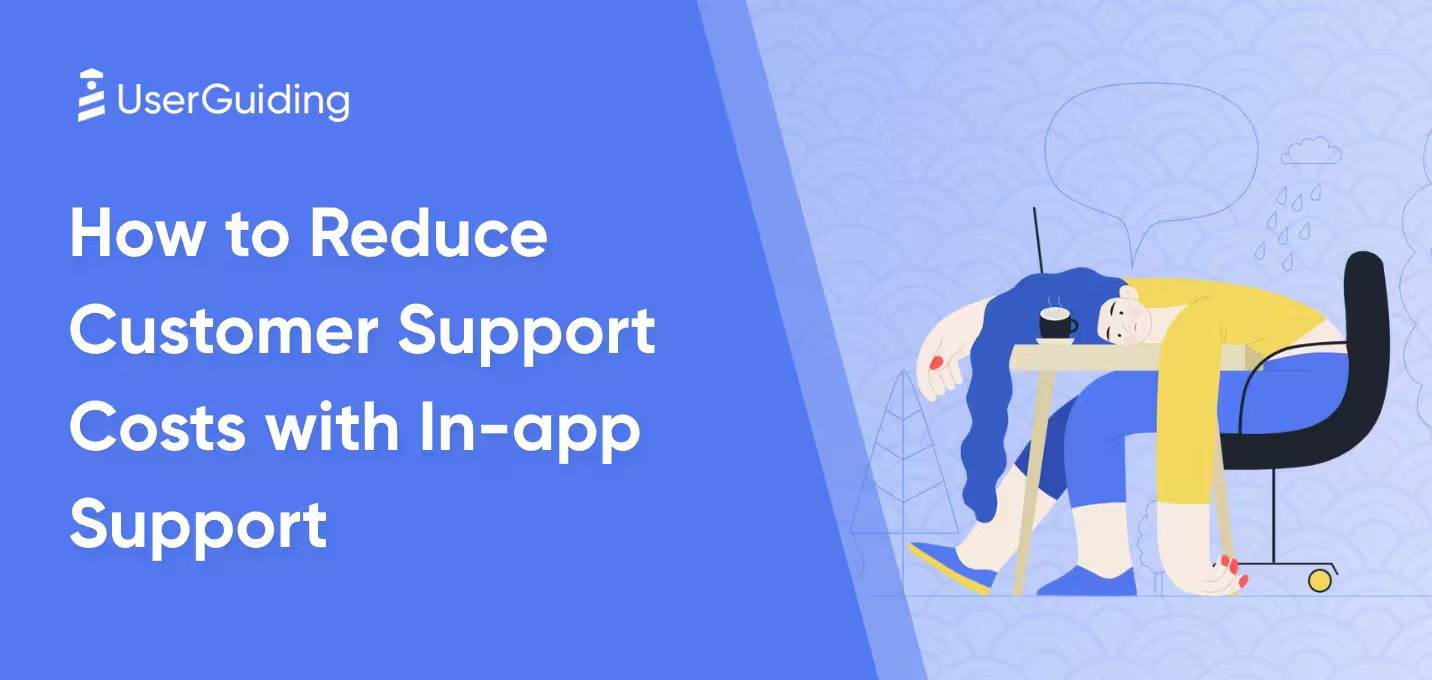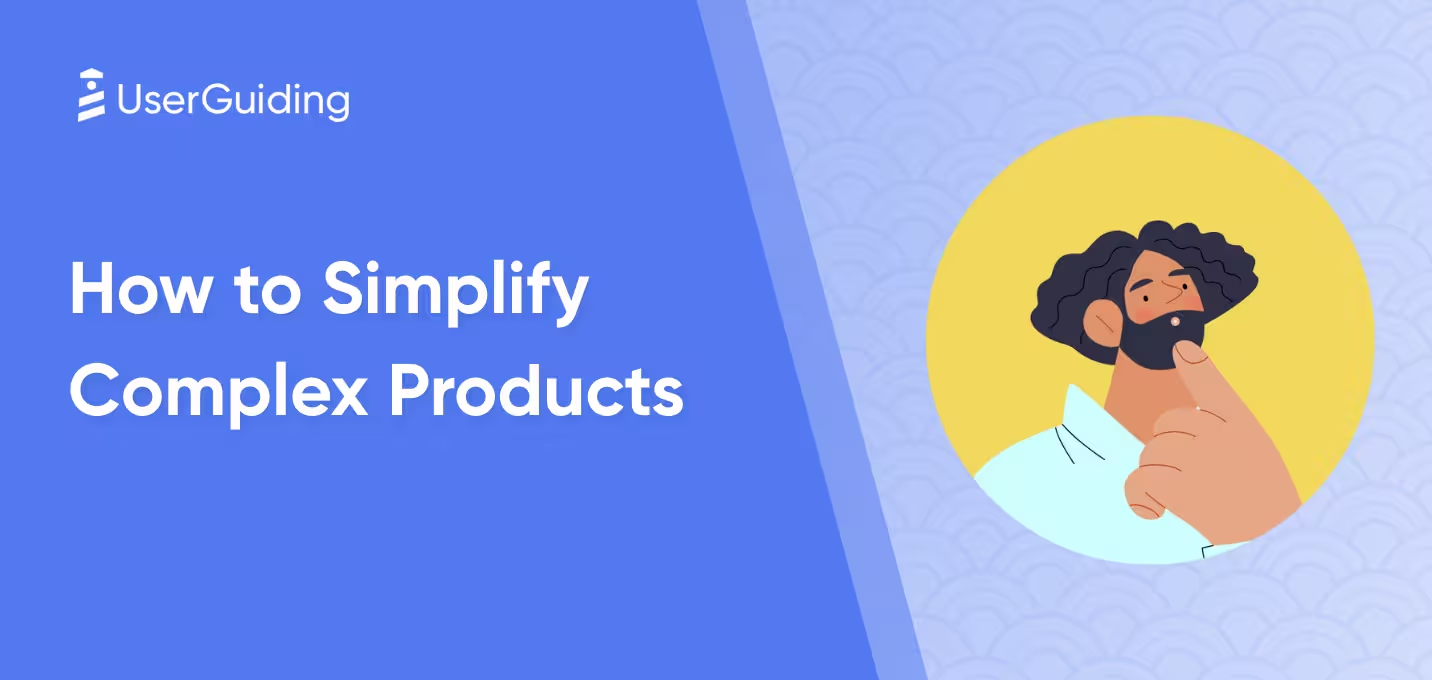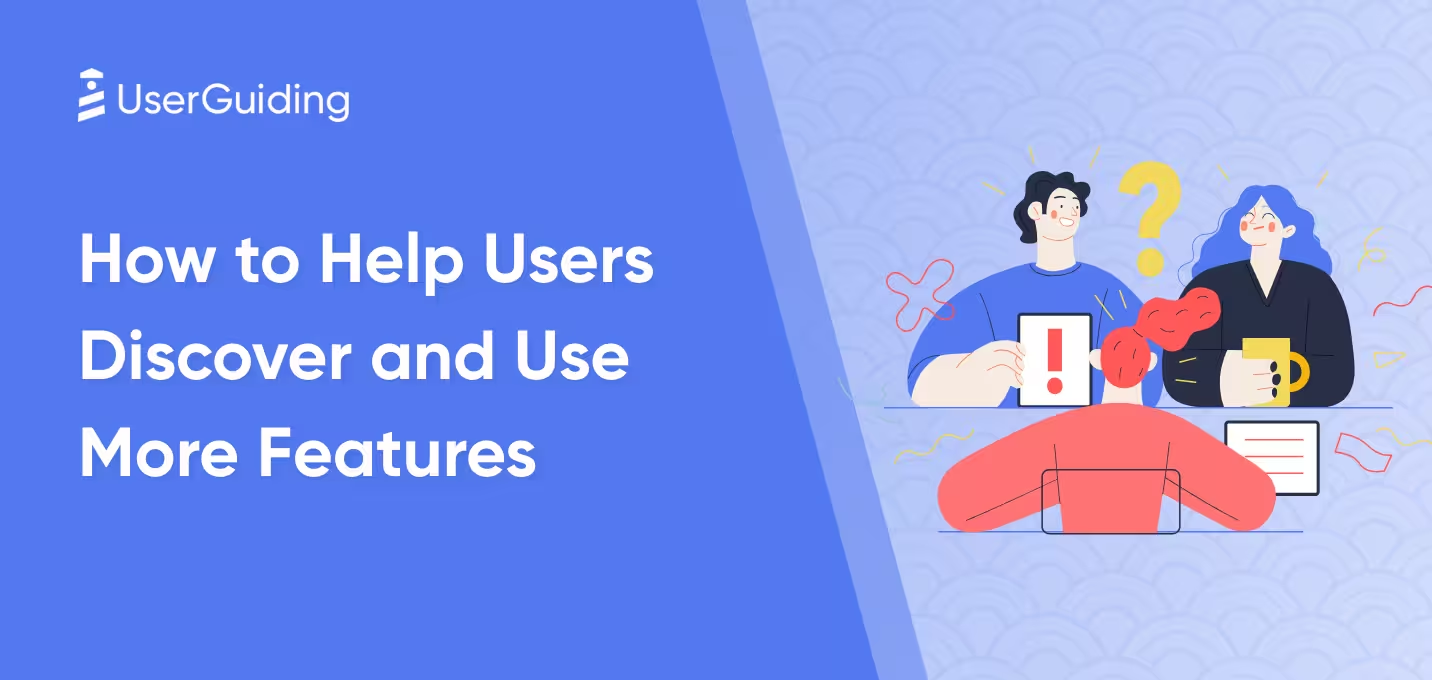

Have you ever thought about the actual cost of losing a customer or a star employee?
It goes beyond simply filling the empty seat.
On average, businesses lose $243 when a customer churns. Similarly, Oracle NetSuite believes that
The cost of replacing an individual employee can range from one-half to two times the employee’s salary. That means losing an employee with an annual salary of $80,000 can cost the organization as much as $160,000.
But what if we told you that you can peek into the minds of departing individuals and understand why they're leaving?
Here's where exit surveys come in.
These anonymous questionnaires offer a powerful tool to gather honest feedback from departing customers and employees.
In this article, you'll discover how exit surveys can help you improve customer satisfaction, cultivate a more engaged workforce, and ultimately create a positive experience for everyone involved.
Ready, set, go!
TL;DR
- Exit surveys provide quantifiable data to analyze trends and make informed decisions about process improvements for customers and employees.
- Exit surveys act as an early warning system, revealing hidden issues like poor management styles or product shortcomings before they become major problems.
- Make your exit survey accessible through various channels. Offer online surveys, email invitations, and even paper options for those who prefer non-digital participation.
- Guarantee anonymity to encourage complete honesty. Use anonymous surveys or a third-party platform to collect responses.
- Tailor your approach and craft questions specific to the audience (employees vs. customers) to get the most relevant feedback.
What is an Exit Survey?
Exit surveys are questionnaires given to individuals ending a relationship with an organization. The individual can be a customer cancelling a service, or an employee departing.
These surveys cover
- reasons for leaving,
- satisfaction with various aspects of the company, and
- suggestions for improvement.
By collecting this data voice, you can identify areas where your product or service excels and areas needing work, ultimately helping you retain future employees, enhance customer experiences, or improve company culture.
Why are Exit Surveys Important?
Identifying common reasons for employee turnover or customer churn
Exit surveys act as a window into the minds of departing employees and customers, shedding light on the root causes of turnover and churn.
By asking targeted questions about motivations for leaving and satisfaction with various aspects of the experience, you can identify recurring themes.
This enables you to pinpoint common reasons for dissatisfaction, such as compensation issues for employees or product quality concerns for customers.
By acting on this feedback, you can address these problems and implement changes to improve retention and loyalty.
Detecting potential issues within the company or customer experience
Exit surveys act as an early detection system for you if you design them well.
For instance, an exit survey might reveal widespread dissatisfaction with a specific manager's leadership style, or a recurring theme of feeling undervalued by the company.
On the customer side, these surveys can pinpoint areas where a product falls short of expectations or identify frustrations with the customer service process.
By capturing honest feedback from departing employees and customers, these surveys can uncover hidden issues, like management styles or product shortcomings, before they become major problems.
Improving employee retention strategies and customer satisfaction
Beyond pinpointing specific issues, exit surveys also provide a valuable pulse check on company culture and overall customer experience.
These surveys can reveal broader trends in employee morale or customer sentiment that might not be readily apparent through day-to-day interactions.
For example, an employee exit survey might reveal that a significant portion of employees leaving the company feel they lack opportunities for growth.
This insight can prompt you to develop mentorship programs or invest in training and development resources, ultimately increasing employee engagement and reducing turnover.
Informing data-driven decisions for process improvement
Imagine a software company analyzing its exit surveys and finding a consistent complaint about the bug reporting process.
This quantifiable data allows them to analyze trends. They might discover a department overloaded with tickets, or a system hindering clear communication.
With this knowledge, they can implement data-driven solutions, like hiring additional support staff or streamlining the reporting system. This directly addresses the root cause of employee frustration and improves the bug-fixing process.
On the customer side, exit surveys might reveal a correlation between high churn rates and a specific pricing tier.
This data could suggest that the tier's value proposition is unclear or doesn't meet customer needs.
By analyzing this trend, the company can refine its pricing structure or communication around that tier, leading to a more satisfied customer base.
Feeling valued and heard by the company
Imagine an employee feels undervalued by their manager. Or a customer is frustrated about the service or product you provide.
An exit survey allows them to express this concern. Even if they choose another job or switch to a competitor, the company's act of listening through the survey shows you value their experience.
Later, if you address manager training or improve the product based on exit survey feedback, it shows a commitment to improvement and validates the customer and employee's voices.
Exit surveys are also very beneficial if you're working with remote or contract workers.
Collecting anonymous feedback about your remote work policies or benefits can help you invest in better remote workforce management.
Ask remote workers about the challenges and benefits of remote work.
Believe it or not, they will give you a great picture of how your remote work policies affect their view of the company.
Contributing to positive changes for future employees/customers
Exit surveys fuel positive change for future employees and customers.
Imagine an employee survey reveals stress due to long hours. This feedback might lead to flexible work options, creating a more sustainable work environment for future staff.
Similarly, customer exit surveys highlighting product durability issues can prompt improvements or new features, leading to a higher quality offering for future customers.
By learning from departing voices, you create a better experience for those who stay.
How to Collect the Best Insight Through Exit Surveys
It is not enough to just know what goes into an exit survey. You must also know how to leverage these surveys to actually make an impactful change for your business.
That's why we compiled a list for you. Think of it as "exit survey essentials," and feel free to adjust things based on your industry:
Timing
Strike while the iron is hot!
Aim to conduct exit surveys within the first few weeks after an employee or customer departs.
This ensures that the employees' or customers' experiences are still fresh in their minds, leading to more accurate and detailed feedback.

UserGuiding's survey feature helps you create custom employee and customer exit surveys in minutes without coding!
Confidentiality is Key
According to Forbes' 2021 report, 74% of employees are more inclined to give feedback if surveys are anonymous.
Beyond reasons of safety or media coverage, as in the case of Susan Fowler, anonymous surveys encourage departing individuals to be completely honest and provide the most valuable insights about your company or product.
Provide ironclad guarantees of anonymity. You can achieve this by using anonymous surveys or a third-party platform to collect responses.
Multiple Avenues for Feedback
Make it easy for everyone to participate!
Offer the exit survey through multiple channels.
This could include online surveys, email invitations, or even paper surveys for those who prefer a non-digital option.
The wider the range of options, the higher your participation rate will be.
Clarity is King
Keep your questions clear, concise, and easy to understand. Avoid any jargon or overly technical language.
Use a mix of multiple-choice questions for quick data gathering and open-ended questions to allow for more detailed and nuanced feedback.
Tailored Questions for Tailored Insights
Don't use a one-size-fits-all approach!
That's a huge mistake.
Craft questions specific to the audience you're surveying.
Employee surveys might focus on work culture, workload, or management styles, while customer surveys could target product features, customer service interactions, or pricing.
Close the Loop: Show You Care
Don't let the feedback disappear into a black hole!
Communicate how you're using the exit survey data to implement improvements.
You can do this through company-wide announcements, newsletters, or even by directly reaching out to departing individuals (if anonymity allows) to thank them for their contribution and share how their feedback is being used.
Incentivize Participation (Optional)
A little nudge can go a long way!
Consider offering a small incentive, like a gift card or a charitable donation in the departing individual's name, to encourage participation.
However, ensure the incentive doesn't skew the data by influencing participants to give positive feedback in exchange for the reward.
Data is Power, Analyze It Regularly
Don't just collect data, use it!
Regularly analyze the exit survey feedback to identify trends and recurring themes.
This will help you pinpoint areas where improvements are most needed and prioritize your actions accordingly.
16 Customer and Employee Exit Survey Questions
Employee Exit Surveys
Reasons for Leaving
- Why did you decide to leave [Company Name]? (Multiple choice with options like "Better opportunity," "Compensation," "Work-life balance")
- Was there anything we could have done to convince you to stay? (Open-ended)
Work Experience
- On a scale of 1-10, how satisfied were you with your overall experience at [Company Name]?
- Did you feel you had the resources and support to succeed in your role?
- How would you rate the communication and transparency from management? (Scale or open-ended)
Company Culture
- Describe the company culture at [Company Name] in 3 words.
- Did you feel valued and appreciated by your colleagues and superiors?
- Were there opportunities for growth and development within the company? (Open-ended)
Customer Exit Surveys
Reasons for Leaving
- Why did you decide to stop using our product/service? (Multiple choice with options like "Found a better alternative," "Price," "Unsatisfied with quality")
- Is there a chance you would return to us in the future? Why or why not? (Open-ended)
Product/Service
- How satisfied were you with the overall quality of our product/service? (Scale)
- Did the product/service meet your expectations?
- What features of the product/service did you find most useful/least useful? (Open-ended)
Customer Experience
- How easy was it to interact with our customer service team? (Scale)
- Did you feel our company valued your business?
- How can we improve your overall experience with our company? (Open-ended)
Actionable Steps to Use the Data From Exit Surveys
Identify Trends and Areas for Improvement
Analyze the data to identify recurring themes and areas where concerns are concentrated.
This could be specific reasons for employee turnover, common customer pain points, or dissatisfaction with particular aspects of the company experience.
Prioritize Based on Impact
Not all issues are created equal.
Rank the identified areas for improvement based on their potential impact on employee retention, customer satisfaction, or overall business goals.
Focus on addressing the most critical issues first.
Develop Action Plans
For each prioritized area for improvement, create a specific action plan.
This plan should outline concrete steps to address the issue, assign clear ownership for implementation, and set measurable goals to track progress.
Implement and Monitor Changes
Put your action plans into action!
This might involve anything from making changes to company policies, revamping product features, or introducing new training programs for employees.
Once implemented, monitor the impact of the changes to see if they are effectively addressing the issues identified in the exit surveys.
Communicate Progress and Next Steps
Keep employees and customers informed about the actions you're taking based on exit survey feedback.
This transparency demonstrates your commitment to addressing concerns and fosters trust.
Additionally, communicate any next steps you plan to take based on ongoing data analysis.
Key Takeaways
Exit surveys offer a goldmine of insights to improve your organization whether they're for employees or customers.
Beyond the immediate value, they encourage genuine responses, revealing blind spots in company culture or customer experience by offering anonymity.
Exit surveys are even more crucial for remote or contract workers, who may have less day-to-day interaction with the company. These surveys can act as a vital communication bridge, uncovering hidden issues that traditional methods might miss.
Moreover, by analyzing this feedback, product marketing teams can identify areas for improvement, such as clarifying product messaging or creating targeted content that better aligns with customer needs.
Frequently Asked Questions
When to do an exit survey?
Exit surveys should be conducted after an employee or a customer has made the decision to leave but before they physically depart from the organization.
Are exit surveys reliable?
While they can provide valuable insights, the reliability of exit surveys can be influenced by factors such as the timing of the survey, the anonymity of responses, and the honesty of departing employees.
Exit surveys may be more reliable when conducted by managers who have a closer relationship with the exiting employee, such as second- or third-line managers.
What is the point of exit interviews?
Exit interviews provide valuable feedback for the company to identify areas for improvement.
In some cases, exit interviews can also be used as a tool to potentially retain employees and customers by addressing their concerns or changing circumstances.

















.svg)
.svg)
.svg)
.svg)
.svg)

.svg)
.svg)












.svg)
.svg)




.png)















